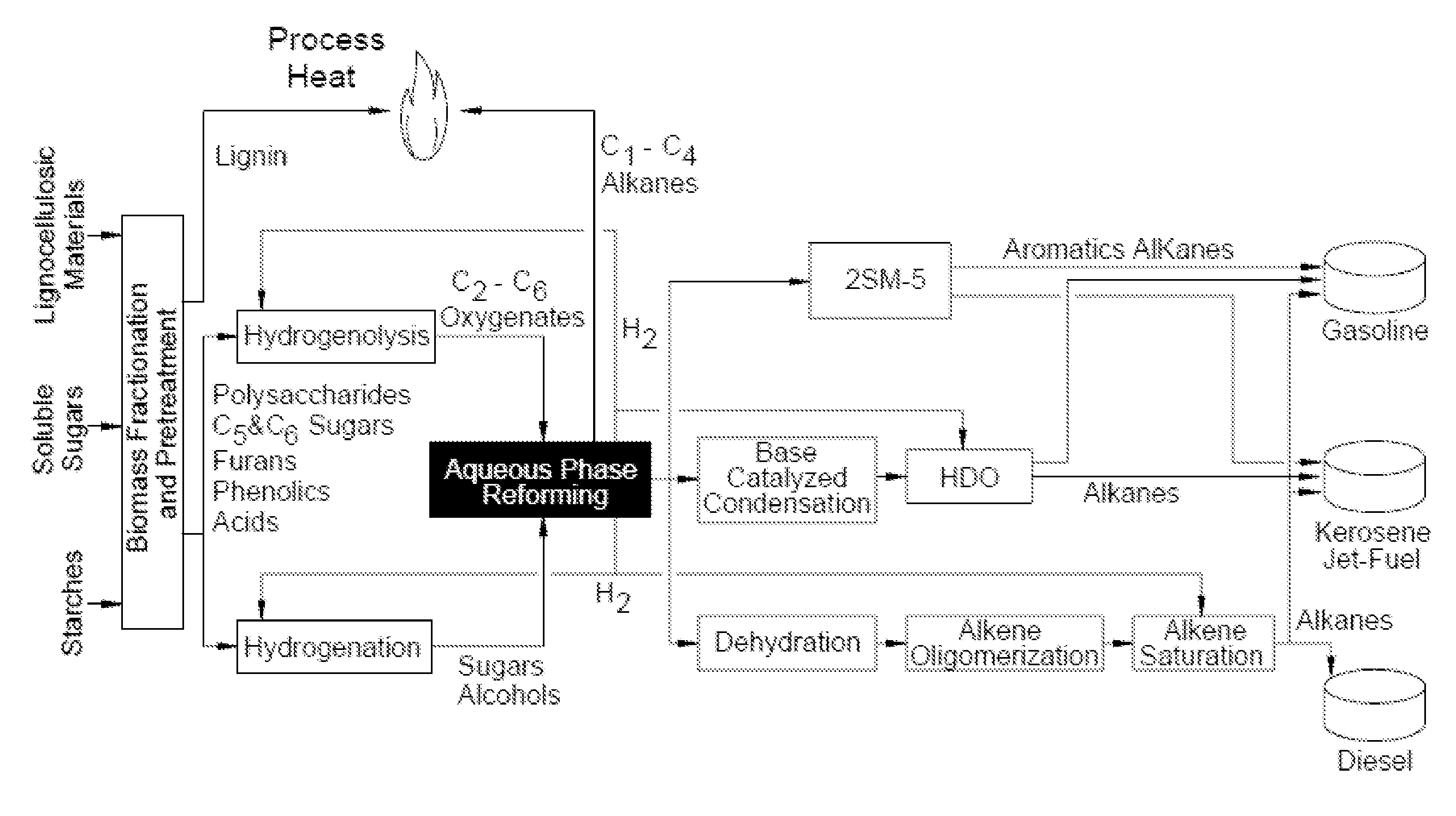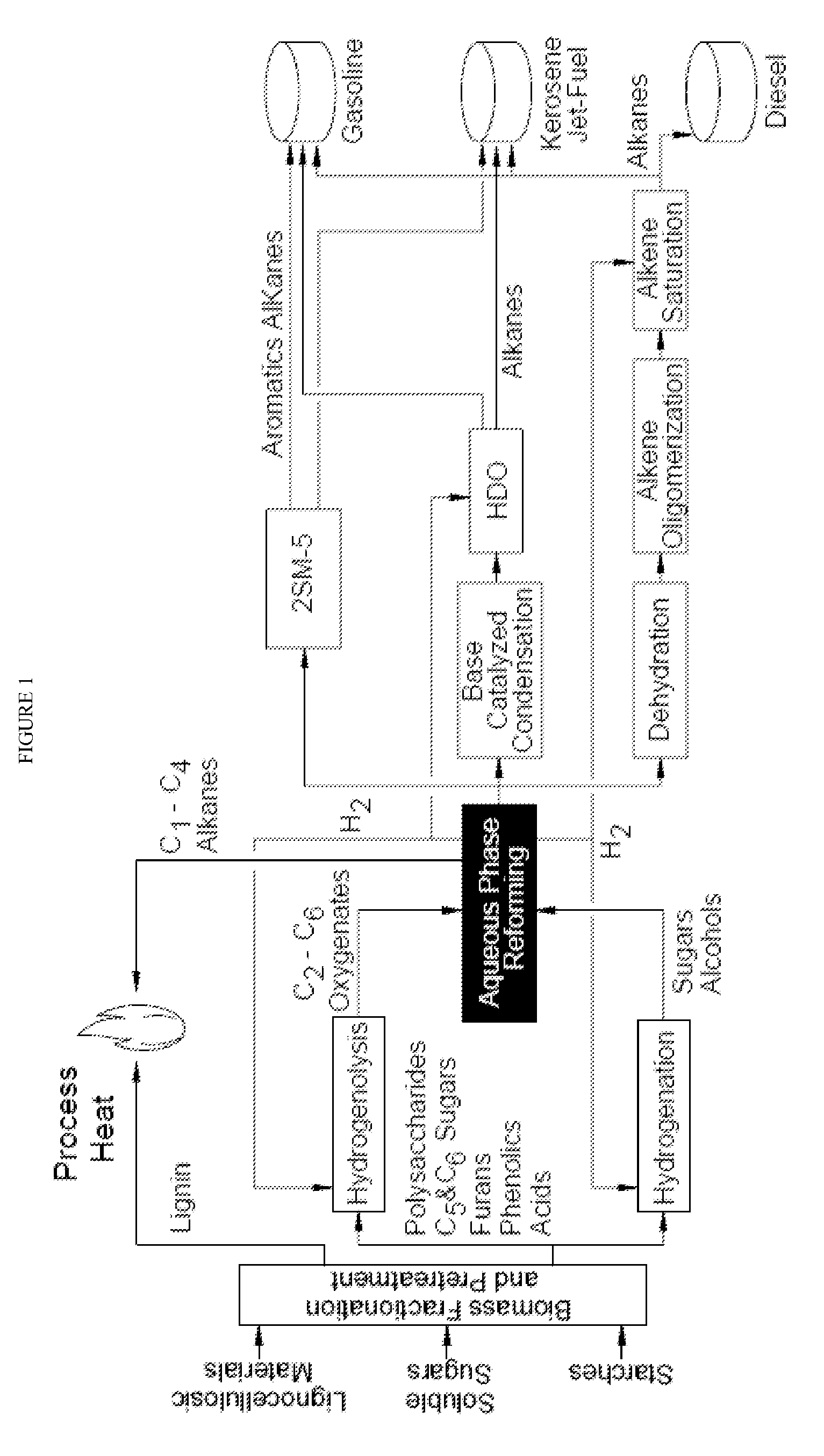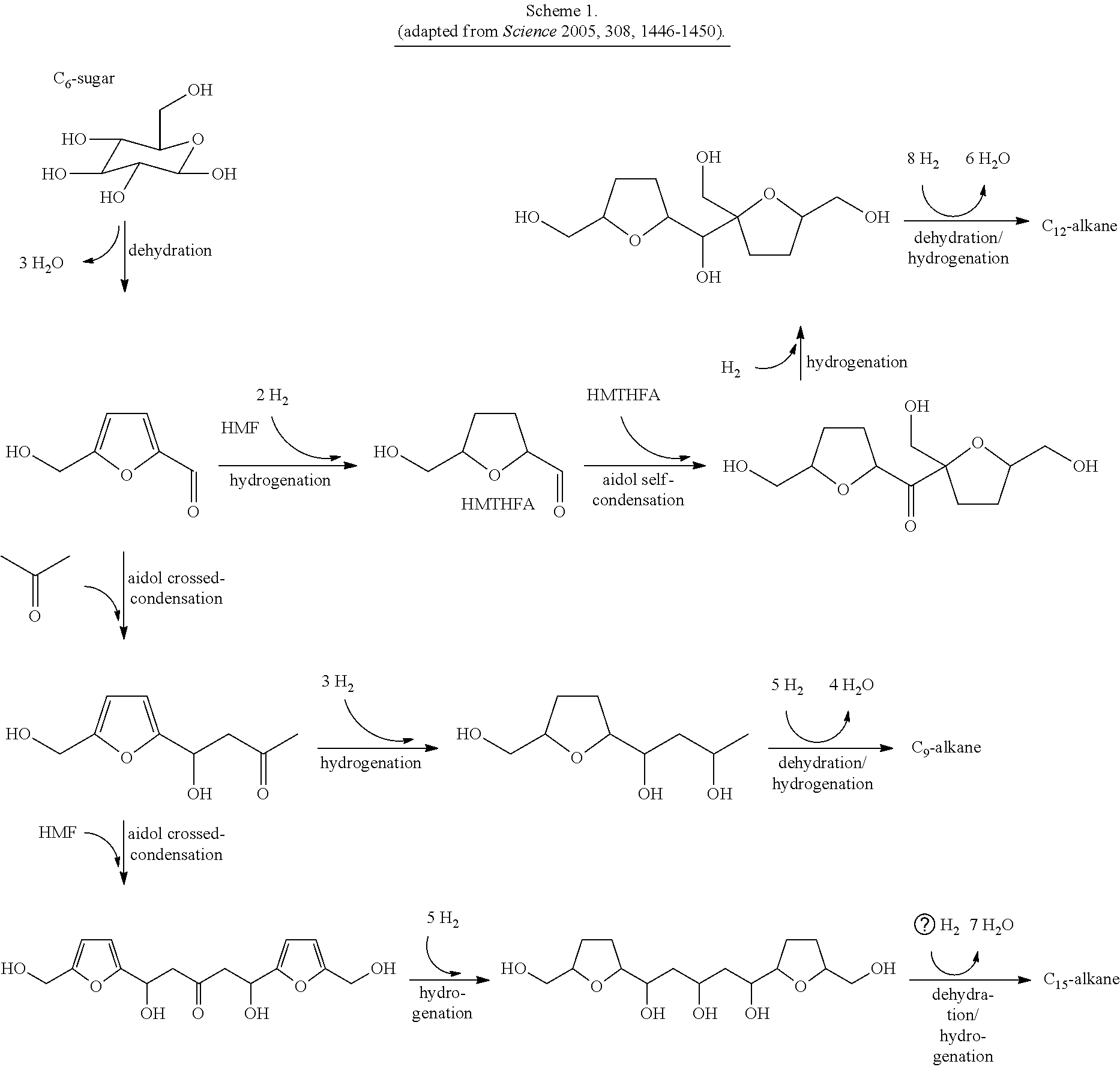Production of liquid fuels (sylvan-liquid-fuels) from 2-methylfuran
a technology of methylfuran and sylvan-liquid fuel, which is applied in the direction of hydrocarbon from oxygen organic compounds, chemistry apparatus and processes, organic chemistry, etc., can solve the problems of ducts and filters, not completely soluble, and significant increases in the price of some basic foodstuffs
- Summary
- Abstract
- Description
- Claims
- Application Information
AI Technical Summary
Benefits of technology
Problems solved by technology
Method used
Image
Examples
example 1
Preparation of a Chemoselective Hydrogenation Catalyst A
[0053]A pore volume of 2.98 g of a USY zeolite (particle size 0.425-0.850 mm) with a Si / Al ratio of 20 is impregnated with 4 ml of an aqueous solution of 139 mg of La(NO3)3.6H2O and 722 mg of Cu(NO3)2.3H2O. This material is dried in an oven overnight at 60° C.
example 2
Preparation of a Chemoselective Hydrogenation Catalyst B
[0054]A pore volume of 3.00 g of a Beta zeolite (particle size 0.425-0.850 mm) with a Si / Al ratio of 13 is impregnated with 4 ml of an aqueous solution of 139 mg of La(NO3)3.6H2O and 719 mg of Cu(NO3)2.3H2O. This material is dried in an oven overnight at 60° C.
example 3
Preparation of a Hydrogenation / Dehydration Catalyst C
[0055]Norit activated carbon particles from 0.425 to 0.850 mm are impregnated with a solution of platinum hexachloride acid hexahydrate in deionised water at pore volume to obtain a catalyst with a platinum concentration of three percent by weight. The material is dried at 60° C. for 72 hrs in an oven.
PUM
| Property | Measurement | Unit |
|---|---|---|
| temperature | aaaaa | aaaaa |
| temperature | aaaaa | aaaaa |
| temperature | aaaaa | aaaaa |
Abstract
Description
Claims
Application Information
 Login to View More
Login to View More - R&D
- Intellectual Property
- Life Sciences
- Materials
- Tech Scout
- Unparalleled Data Quality
- Higher Quality Content
- 60% Fewer Hallucinations
Browse by: Latest US Patents, China's latest patents, Technical Efficacy Thesaurus, Application Domain, Technology Topic, Popular Technical Reports.
© 2025 PatSnap. All rights reserved.Legal|Privacy policy|Modern Slavery Act Transparency Statement|Sitemap|About US| Contact US: help@patsnap.com



